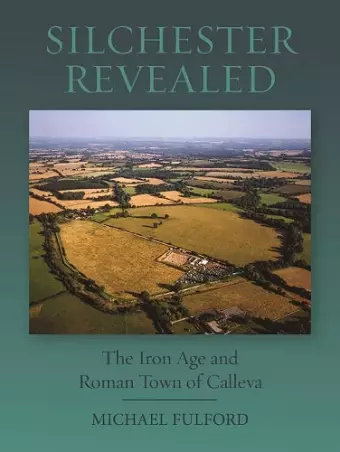Silchester Revealed
The Iron Age and Roman Town of Calleva
Format:Paperback
Publisher:Windgather Press
Published:15th Mar '21
Should be back in stock very soon

With its apparently complete town plan, revealed by the Society of Antiquaries of London’s great excavation project, 1890-1909, Silchester is one of the best known towns in Roman Britain and the Roman world more widely. Since the 1970s excavations by the author and the University of Reading on several sites including the amphitheatre, the defences, the forum basilica, the public baths, a temple and an extensive area of an entire insula, as well as surveys of the suburbs and immediate hinterland, have radically increased our knowledge of the town and its development over time from its origins to its abandonment. This research has discovered the late Iron Age oppidum and allowed us to characterise the nature of the settlement with its strong Gallic connections and widespread political and trading links across southern Britain, to Gaul and to southern Europe and the Mediterranean.
Following a review of the evidence for the impact of the Roman conquest of A.D. 43/44, the settlement’s transformation into a planned Roman city is traced, and its association with the Emperor Nero is explored. With the re-building in masonry of the great forum basilica in the early second century, the city reached the peak of its physical development. Defence building, first in earthwork, then in stone in the later third century are major landmarks of the third century, but the town can be shown to have continued to flourish, certainly up to the early fifth century and the end of the Roman administration of Britain. The enigma of the Silchester ogham stone is explored and the story of the town and its transformation to village is taken up to the fourteenth century.
Modern archaeological methods have allowed us to explore a number of themes demonstrating change over time, notably the built and natural environments of the town, the diet, dress, health, leisure activities, living conditions, occupations and ritual behaviour of the inhabitants, and the role of the town as communications centre, economic hub and administrative centre of the tribal ‘county’ of the Atrebates.
A welcome addition to the bibliography on Silchester specifically and to the literary landscape of Roman Britain in general … [It] thus functions not just to reveal Silchester, but also to reveal the development and future potential of archaeological excavation in general in approachable and straightforward terms. * Bryn Mawr Classical Review *
I thoroughly enjoyed this book. It is in many respects a celebration of the evidence that can be obtained from careful excavation and – just as important – the detailed analysis of the findings that allows their full potential to be realised … Thank goodness a young lecturer at Reading University was up for the challenge in 1974. This book is a trumphant statement of what Michael Fulford has achieved since then. * Current Archaeology *
This is a terrific book, both for what it is and what it represents. The latter is a remarkable project, without precedent and possibly unrepeatable. * British Archaeology *
ISBN: 9781911188834
Dimensions: unknown
Weight: unknown
240 pages